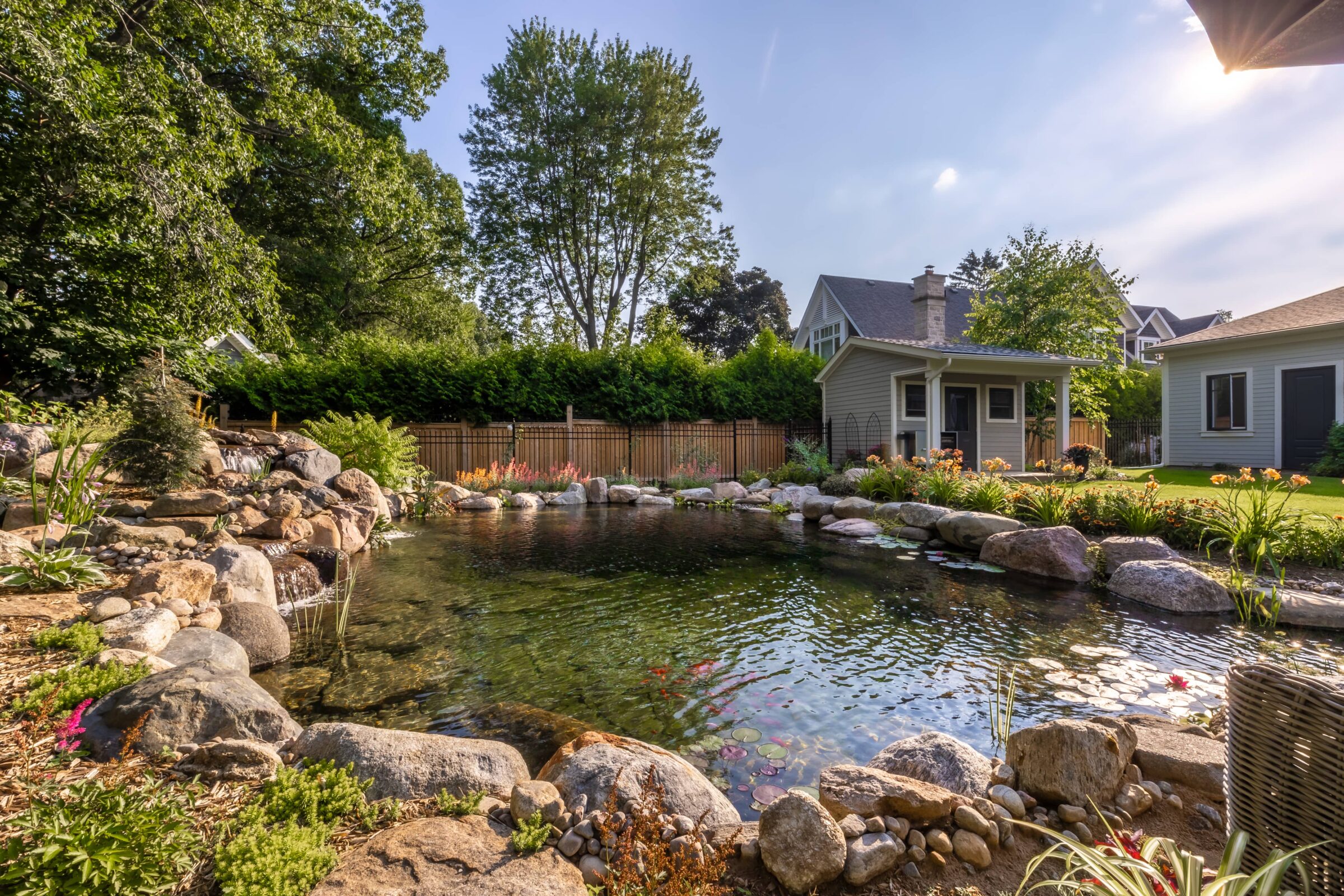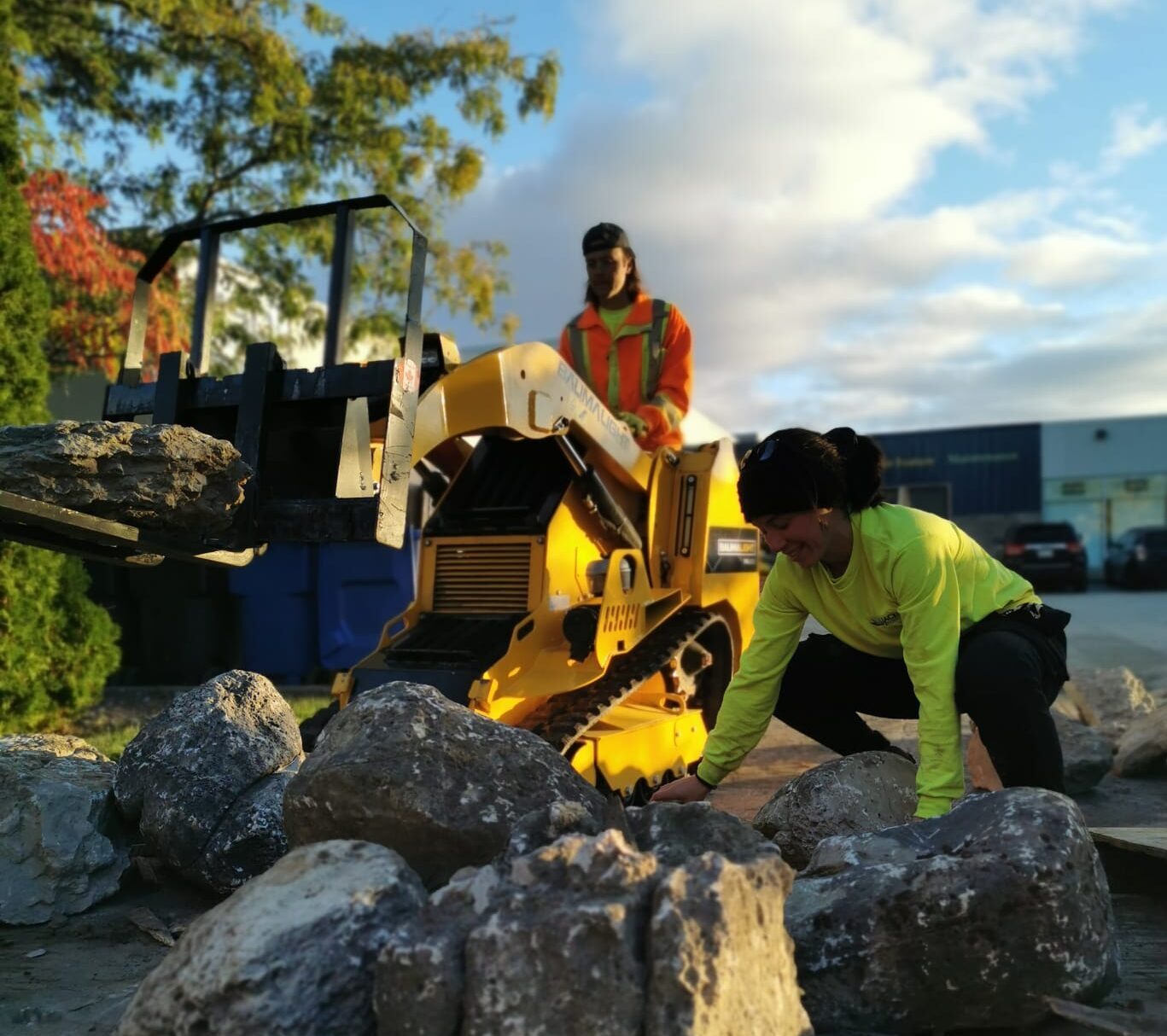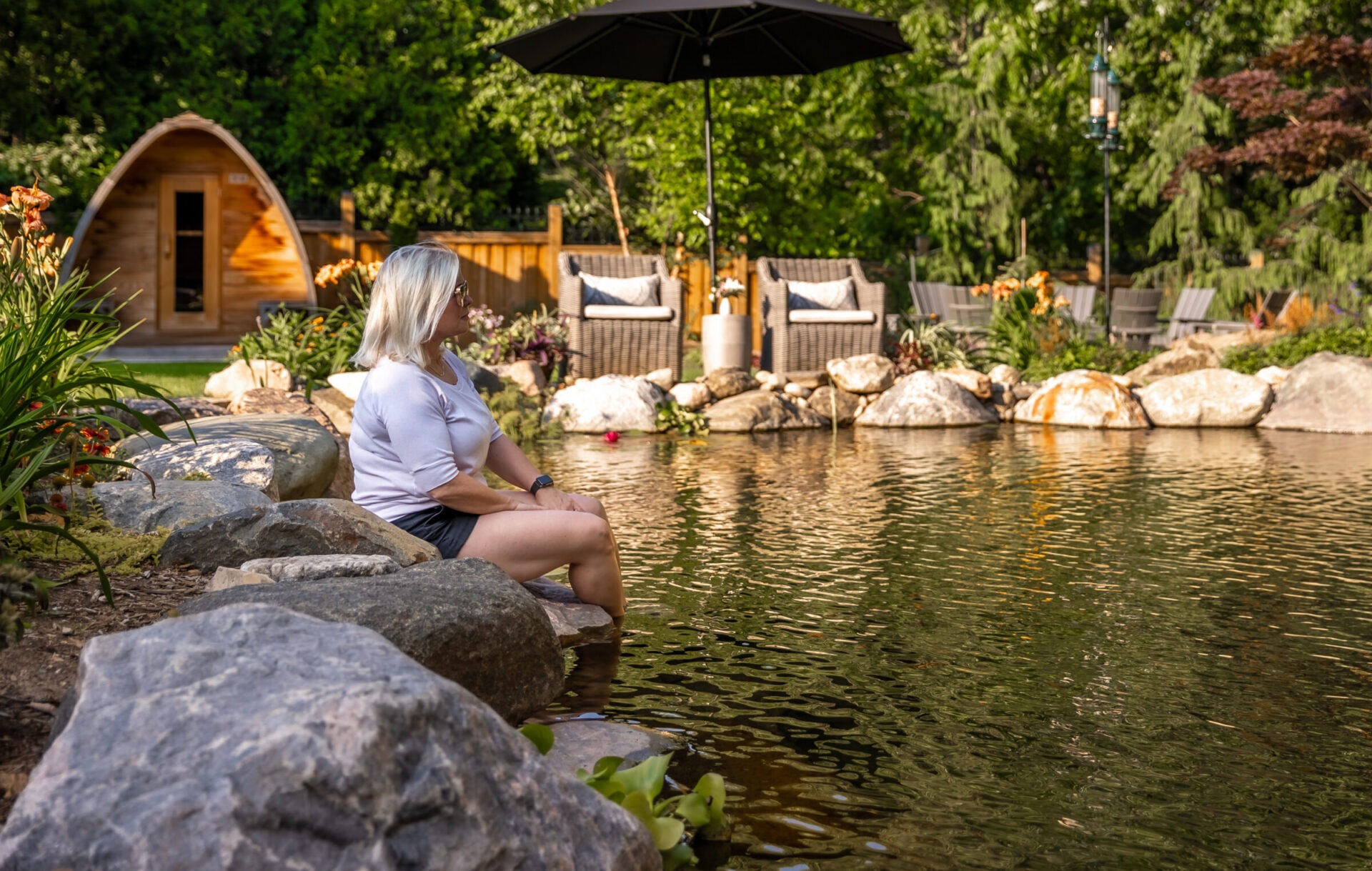Pond Maintenance 101: Keeping Your Pond Healthy Year-Round in Ontario

Pond maintenance in Ontario can feel overwhelming. You envision a beautiful, tranquil pond, but algae blooms and murky water can quickly turn that dream into a headache. Your pond should be a source of relaxation, not stress. Ontario’s changing seasons, from hot summers to freezing winters, add extra challenges in keeping your water garden balanced. But here’s the good news: with the right routine, it’s easy to keep your water clear and your fish healthy year-round. By following some practical pond maintenance tips and adjusting care each season, you can maintain a clean, thriving pond without constant worry. You’ve invested time and love into your koi and water lilies, so naturally, you want to keep them healthy without constant fuss. Caring for your pond doesn’t have to be difficult with a little know-how and consistency. Let’s walk through how you can keep your pond in top shape through spring, summer, fall, and winter.
The Basics of a Healthy Pond

A healthy pond is all about balance. Clear water and healthy fish come from managing a few fundamentals: water quality, filtration, and aeration. First, pay attention to water quality: you want the pond water to be clear and balanced.
Next, filtration is crucial. One key pond maintenance tip is to use both a mechanical skimmer and a biological filter together. The mechanical skimmer traps leaves, pollen, and other debris before they sink and decay, so they don’t foul the water. The biological filter (often built into a waterfall unit) houses colonies of beneficial bacteria that break down fish waste and other toxins. Good filtration means you’ll spend less time on manual pond cleaning in the long run.
Aeration is the third key element. Features like waterfalls, fountains, or dedicated aerator pumps add oxygen to the water, and fish and beneficial bacteria need oxygen to thrive. Aeration also prevents stagnant spots where algae could take hold. Nature helps out as well: aquatic plants play a big role in the pond’s ecosystem. Plants like water lilies and hyacinths absorb excess nutrients (which algae feed on) and provide shade, helping stabilize water temperature. Finally, remember that less is more when it comes to fish food. Overfeeding your fish leads to uneaten food decaying in the water, which hurts water quality and encourages algae. By avoiding overfeeding and promptly removing fallen leaves or debris, you stop problems before they start. If you nail these basics, you’ll find pond maintenance much easier, and your pond’s ecosystem will largely take care of itself.
Weekly & Monthly Pond Maintenance Tasks
Regular upkeep doesn’t need to take long. By handling a few small chores consistently, you’ll keep your pond healthy and avoid trouble. Here are some weekly and monthly pond maintenance tips:
- Skimming Debris: Spend a few minutes each week removing leaves, petals, and other floating debris from the surface. Use a pond net to scoop out anything the skimmer might have missed. Regular skimming prevents organic matter from sinking and turning into muck that fuels algae.
- Filter Check & Cleaning: Every week or two, check your pond’s filters (like the skimmer pad or waterfall filter) and rinse off any gunk to keep the water flowing. During autumn’s heavy leaf drop, clean the filter more often to stay ahead of clogs.
- Water Top-Ups: Especially in hot weather, ponds lose water to evaporation. Check the water level and top up as needed so the pump never runs dry. Always refill with dechlorinated water to protect your fish, and keep the water level steady so the skimmer and pump can do their job.
- Pump Inspection: Check your pump weekly by watching the waterfall or fountain flow. If the water flow looks weak, unplug the pump and clear any leaves or algae clogging the intake. Keeping the pump intake clean prevents burnout and keeps your pond’s water moving.
- Algae Control: If your pond has an ionizer system, make sure it’s operating correctly and releasing algae-fighting ions. Adding a natural treatment like barley straw extract every few weeks can also help keep algae at bay.
Seasonal Pond Maintenance

Spring Start-Up
After ice-out, give your pond a thorough spring cleaning to remove leaves and sludge built up over winter. Many pond owners drain the pond (temporarily relocating fish) to hose down muck and clean filters, then refill with dechlorinated water. This deep clean gives your pond a fresh start. It’s a messy job, so many owners hire professionals for the big spring clean-out.
Summer Care
Summer maintenance is mostly about monitoring. Make sure your pump and filter run continuously to keep the water circulated and oxygenated. If the water looks murky, do a small water change to freshen it. Prune overgrown aquatic plants as needed. Continue feeding your fish, but avoid overfeeding.
Fall Prep
Fall is about leaf control and gearing up for winter. Skim or net out leaves frequently to prevent muck buildup. Cut back dying aquatic plants. As the water temperature drops, feed your fish less and stop feeding entirely once it’s below 50°F (10°C). Many owners schedule a professional fall shut-down service to handle deep cleaning, pump removal, and netting the pond for winter.
Winter Care
In winter, one aspect of koi pond maintenance that Ontario pond owners must get right is keeping a small opening in the ice so fish can breathe. Use a pond aerator or a floating de-icer to maintain a vent hole in the ice (never break the ice by force, as it can shock the fish). Shut off the waterfall and pump to avoid ice blockages that could drain the pond. Before the freeze, remove and clean your pump, filter, and other equipment, then store them indoors and drain any exposed pipes. If you have a pondless waterfall or fountain, drain it and bring that pump inside, too. If you’d rather not brave the cold, our team can handle the winterization for you, so everything is taken care of.
At Jackson Pond, we offer all-season maintenance with one package so you are taken care of all year long.
Pro Tips & Handy Tools
Even after mastering the basics, a few expert touches can make pond maintenance easier. Here are some pro pond maintenance tips and helpful tools to consider:
- Dose Beneficial Bacteria: Add beneficial bacteria to your pond regularly to help keep the water clear. These good bacteria break down fish waste and excess nutrients that would otherwise feed algae. You can pour in bottled bacteria on a schedule or install an automatic dosing system that adds a small dose each day. This natural approach reduces the need for chemicals and keeps your pond’s ecosystem balanced.
- Design for Low Maintenance: The best way to minimize upkeep is to start with a pond designed for easy maintenance. Ponds built with rock and gravel lining and plenty of aquatic plants naturally stay cleaner. The rocks give beneficial bacteria lots of surface area, and the plants absorb excess nutrients that would otherwise fuel algae. This design approach, which we use in our pond projects, means you’ll spend less time skimming and cleaning, and more time enjoying your water garden.
Your Partner in Pond Maintenance
With a little TLC and routine care, your pond will reward you with endless moments of peace and beauty. It’s meant to be a place of relaxation for you, and keeping up with basic maintenance will ensure it stays that way. The goal is to spend more time enjoying your pond and less time worrying about it. And remember, you’re not alone in this journey.Whether it’s a spring clean-out or ongoing koi pond care for Ontario’s climate, these services are included when you sign up for one of our full maintenance packages, giving you peace of mind all season long. For more tips, be sure to explore our Ultimate Guide to Backyard Ponds and Waterfalls in Ontario.
Contact us for help with your next project. We’re always happy to help you keep your pond as pristine and enjoyable as the day it was built.
Tags:
